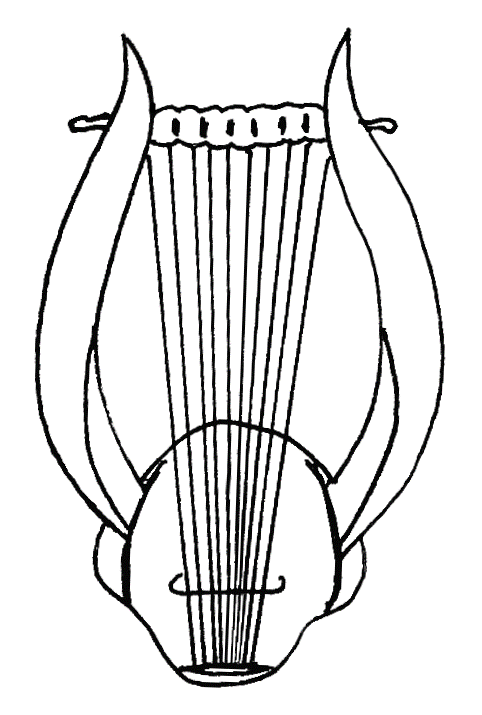
| You are here: Home >> Other >> Word and Topic Studies | PDF of article |
NOTE: It has been a few decades since this research was done. It is possible that additional information may have been discovered during that time. The value of this report lies in the fact that it introduces the various instruments that are mentioned in the Old Testament, along with Scripture references that show some of the passages where those instruments are mentioned. Such information can be a starting point for further research, if desired.
The King James Version word for the instrument is sometimes included in parentheses, when it is different from a more commonly-used word.
MUSICAL INSTRUMENTS OF THE OLD TESTAMENT
Dennis Hinks © 1976
INTRODUCTION

Music played a vital part in Hebrew culture. It was present in all aspects of their life: work, worship, merrymaking, and military activities. It was used to soothe depressed kings (1 Samuel 16:14- 23) and it accompanied shepherds watching their sheep (David was a musician). It even accompanied specific acts of God (for example, the destruction of Jericho, Joshua 6:4-20).
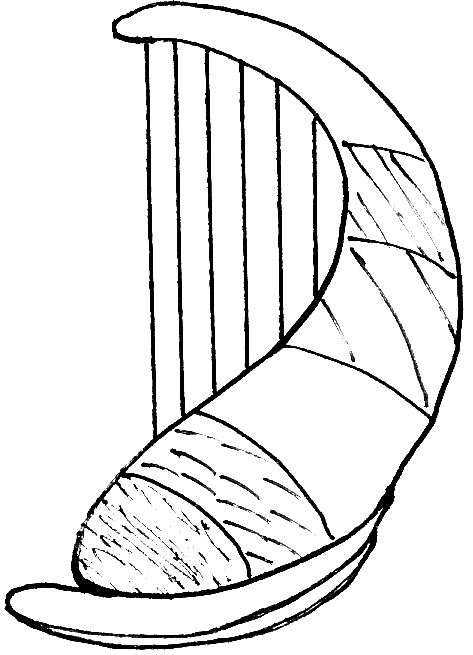
Music was invented within a few generations of Adam (Genesis 4:21). By the time of the Hebrews, there were many types of instruments. Due to the centuries between us and them, it is hard to determine the identity of the various instruments mentioned in the Bible. However, with the etymology of the various words, pictorial sources on coins, monuments and seals (mostly from nations surrounding Israel, perhaps because the Hebrews had a commandment against creating images), various manuscripts, and even discovered musical instruments, we are able to get a good idea of what types of instruments existed, as well as identify many (not all) of the biblical names used for those instruments.
STRINGED INSTRUMENTS
Kinnōr--LYRE (CITHARA) (KJV-"harp") and Nebel--HARP (KJV-- "psaltery"; "viol")
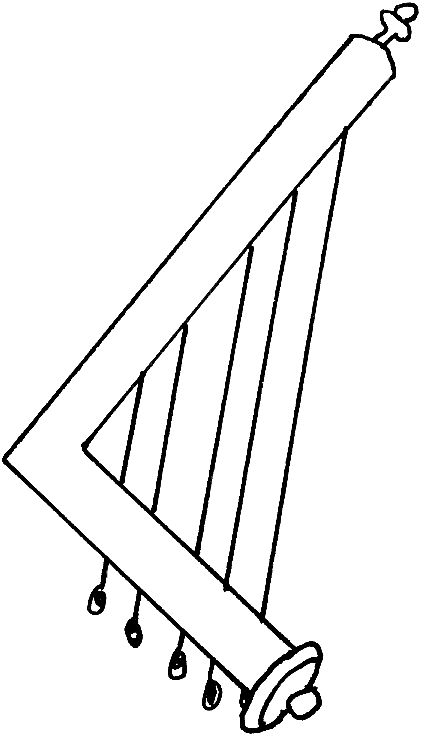
A lyre has a body with two arms, which are joined by a crossbar. The strings stretch from the body to the crossbar. Harps have a neck at an angle to the body, either arched (of the same piece as the body) or angular (the neck fastened to the body at a near right angle). There is some overlap between these two instruments.
Kinnōr comes from the root "to twang." Nebel means "a skin bottle," perhaps referring to the shape of the sound box. Most authorities say kinnōr is a lyre and nebel is a harp. However, there is some confusion between these terms. Some feel that the main difference between them might be that of size and number of strings.
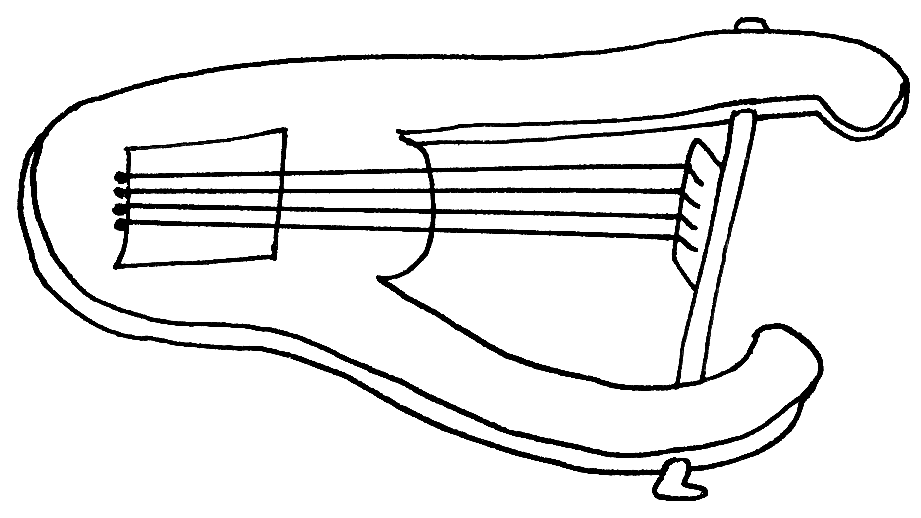
The joyful music of the kinnōr was heard in the temple (1 Chronicles 15:16; 2 Chronicles 5:12), as well as during festivities and banquets (Isaiah 5:12). David used this instrument to calm Saul's spirit (1 Samuel 16:23). It was played by itself (1 Samuel 16:16) or with other musical instruments (1 Samuel 10:5).
The nebel was often played with the kinnōr (1 Kings 10:12) or with other instruments (Isaiah 5:12). It was used in the temple (2 Chronicles 5:12).
Asōr; Nebel Asōr (KJV-- "an instrument of ten strings")
Asōr means "ten." Some believe nebel asōr (Psalms 33:2; 144:9) refers to a "ten-stringed nebel" and asōr (Psalms 92:3) to a shortened form of the name. Others believe this term refers to a zither, an instrument with many strings (in this case, ten) stretched across a body (sounding box), either struck (dulcimer) or plucked (psaltery).
LUTE
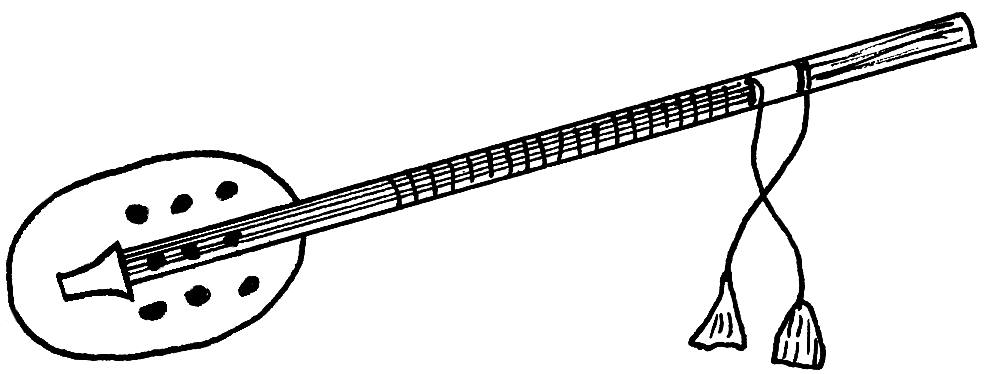
A lute has strings stretched along a neck attached to a resonating body, as does a guitar-like or violin-like instrument. No biblical term has been identified with it, although they probably existed in Israel, since they have been found in Egyptian, Mesopotamian, and Hittite art.
WIND INSTRUMENTS
Shōfar--HORN (KJV-- "cornet," "trumpet") and Yōbēl--HORN (KJV-- "ram's horn", "trumpet")
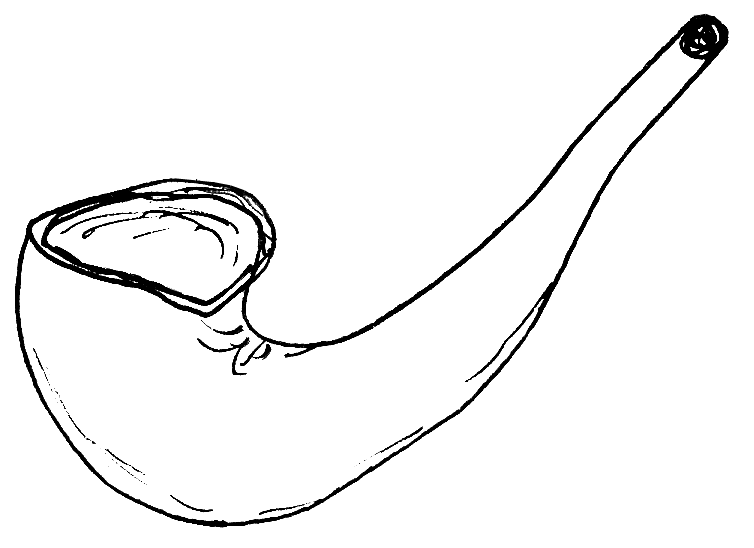
There is no evidence of any distinction between these two terms. Shōfar is used more frequently. Usually the horn was a male ram's horn, which has a curved shape and a relatively wide conical bore. Some were flattened and straightened with heat. Straight (female) mountain goat's horns were also used during the second temple period.
The horn was sometimes used with other instruments (1 Chronicles 15:28). Yet it was used chiefly as a signal instrument in religious and secular activities. It was used in war (Joshua 6:20; Judges 7:16-22). It also announced the year of the Jubilee (Leviticus 25:8-10).
This instrument is still in use today.
Hasōsera--TRUMPET
This instrument consisted of a straight narrow tube flared out at one end, not quite a cubit long. They were usually made of brass or silver, sometimes gold-plated. The tone was sharper than the low-pitched shōfar, and it had a limited number of pitches (two or three).
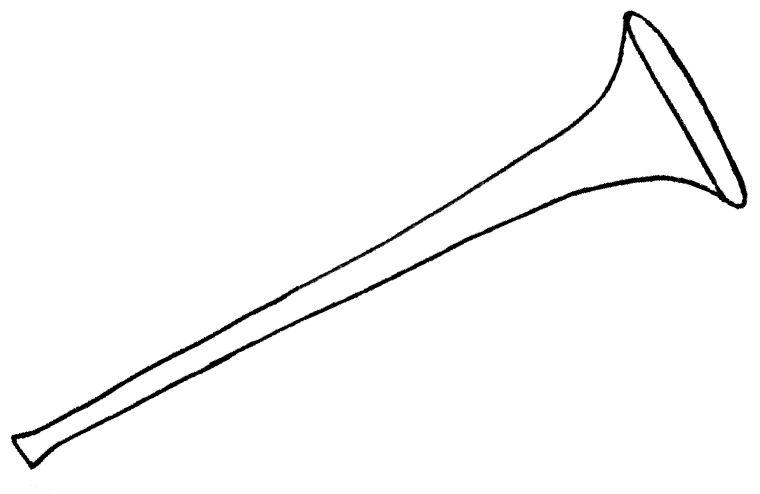
Two long silver trumpets played an important part in Israel's history (Numbers 10:1-10). Trumpets were used to assemble the people or the chiefs, to prepare them for moving camp (during the wilderness wanderings) or for war, as well as during feasts and ceremonies.
FLUTE
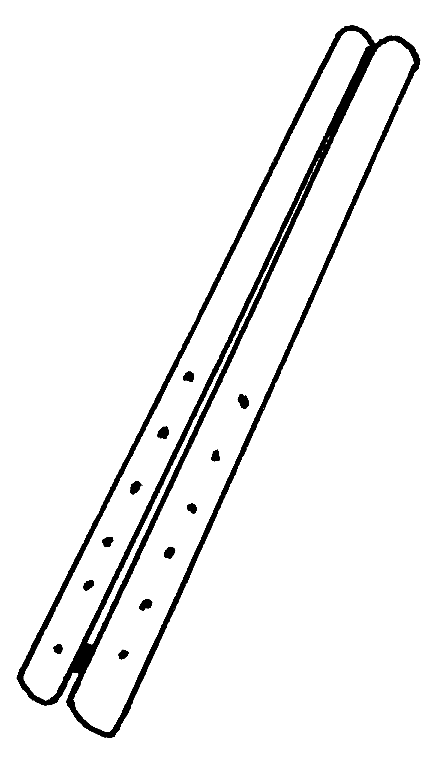
Pipes were probably made from a cane, hollowed wood, or bone; often pierced with holes. They may be divided into two types: pipes with one or two reeds (comparable to modern- day clarinets and oboes) and pipes with no reeds (flutes).
Flutes may be end-blown, cross-blown, or blown like a whistle. Often two pipes (with or without reeds) were played simultaneously by the same person.
Flutes were used at this time, but no biblical term has yet been positively identified with them (although there are a few possibilities).
Halīl--REED PIPE (KJV-- "pipe")
Halīl is derived from the Hebrew word meaning "pierced," which probably indicates fingering holes similar to those in a modern day flute. Some believe halīl was a simple flute. Most believe it had a double reed like a modern-day oboe.
The halīl could produce bright sounds for joyous occasions (1 Kings 1:40) as well as sad notes of grief (Jeremiah 48:36). It was used by common people, as well as in the second temple.
PERCUSSION INSTRUMENTS
Tōph--HAND-DRUM (KJV-- "timbrel," "tabret")
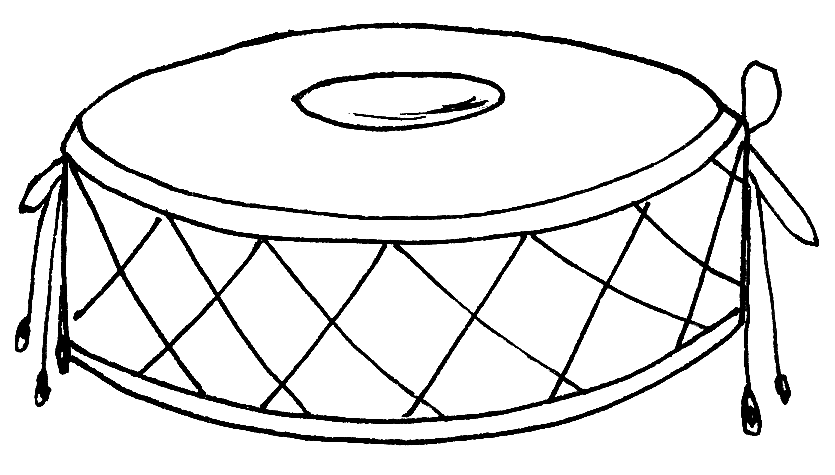
These could be of any size and shape, yet most of them were small hand-drums. Some were made from a wooden hoop covered with two skins. Others were made with a single drum-head; two of which were sometimes put together, back- to-back. Many were light enough for women to use while dancing (Exodus 15:20). They were used during joyous occasions and religious celebrations (2 Samuel 6:5).
Meziltayim--CYMBALS and Selzelim--CYMBALS
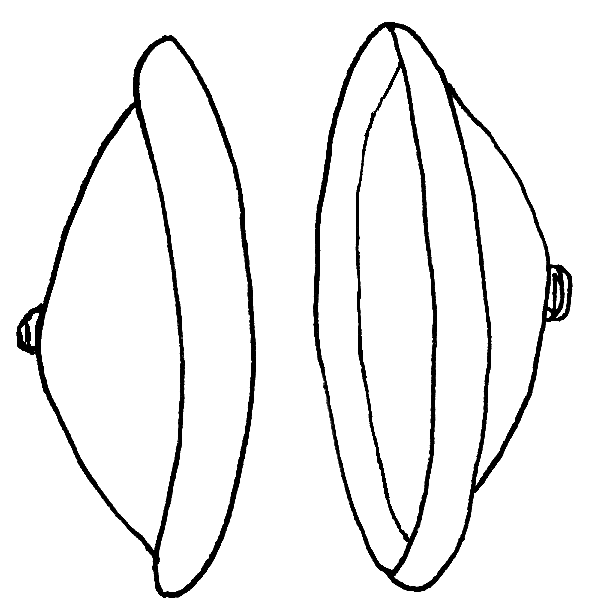
The same root word forms both of these words, so they may be synonymous; yet this need not be so. (There is a third word from the same root, yet with a totally different meaning.) Cymbals varied greatly in size, shape, and sound. These words may signify different types, since both are used in the same context (Psalms l50:5). Perhaps one refers to castanets (some feel this is unlikely).
These instruments were used in temple service (1 Chronicles 15:16, 28) to mark the beginning, end, and pause in the singing and playing.
Mena'anim--SISTRUM (KJV-- "cornet")
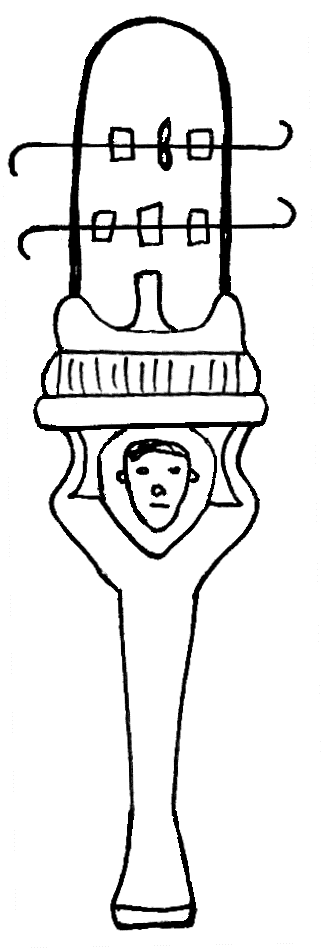
The root designates a shaken instrument--whether a rattle (beads in a gourd) or a sistrum. Most believe mena'anim was a sistrum, which was common, especially in Egypt. It consists of a handle and a frame with jingling cross-bars. It produced a sound, when shaken. David used a mena'anim (2 Samuel 6:5).
Pā'amonim--BELLS
Though used in Israel, they apparently were not used in a strictly musical sense. The high priest wore bells on his garment (Exodus 28:33-35).
INSTRUMENTS OF UNKNOWN IDENTITY
Alamōth
Alamōth (1 Chronicles 15:20; Psalms 46 subtitle) could be a high soprano instrument. Soprano voices have also been suggested.
Gittīth
This could refer to an instrument named after "Gath" or a group of instruments (Psalms 8; 81; 84 subtitles).
Mahōl (KJV-- "dance")
This is one of the instruments that formed the orchestra of praise (Psalms 150:4). Possibly a pipe, it is not "dance" (though from the same Hebrew word).
Minnim (KJV-- "stringed instruments")
It is an instrument (Psalms 150:4) but its identity is unknown.
Negīnoth
Its identity is uncertain. It could refer to a stringed instrument (Psalms 4; 6; 54 subtitles, etc.).
Shālishim (KJV-- "instruments of music ")
The Hebrew word suggests possibly a three-stringed instrument or a three-sided instrument (1 Samuel 18:6).
Shemīnith
This could refer to an eight-stringed lyre or to a pitch an octave lower (higher?) than normal (Psalms 6 subtitle).
Ugab (KJV-- "organ")
It's identity is unknown. It has no satisfactory etymology. It could possibly be a flute, but not an "organ" (Genesis 4:21; Psalms 150:4).
INSTRUMENTS OF DANIEL 3:5ff.
[These are some of the instruments that the Israelites would have been familiar with, during their captivity in Babylon.]
Kātaros (KJV-- "harp")
Kātaros is of Greek origin, indicating a stringed instrument--a cithara or lyre.
Sabbeka (KJV-- "sackbut")
Sabbeka has no convincing etymology. A similar Greek word refers to a harp. An Aramaic name suggests a seven-stringed instrument. A Roman word suggests the name of a tree its wood could have come from. It is definitely not a sackbut (trombone).
Pesanterin (KJV-- "psaltery")
The name is derived from the Greek word for "psalter," but its identity is unknown. Some have suggested a harp or psaltery.
Mashrōkī
Derived from "hiss" or "whistle," it probably signifies some type of pipe or whistle.
Keren (KJV-- "cornet")
Keren is probably an animal horn (compare to Hebrew: keren, "ram's horn"), possibly synonymous to shōfar. Some believe it could be a trumpet.
Sumpōnia (KJV-- "dulcimer)
A few believe sumpōnia could be a reproduction of a Greek word meaning "drum" (tumpanon). More likely, it probably came from Greek sumphonia, which means "in unison", and could refer to the whole orchestra. It is quite unlikely that sumpōnia is a bagpipe (as some believe) or a dulcimer.
CONCLUSION
We do not understand all the Hebrew musical terminology. Yet, from what we do know, we can still get a better appreciation of the music that was a part of their life.
BIBLIOGRAPHY
Best, H. M., and D. Huttar. "Music; Musical Instruments." The Zondervan Pictorial Encyclopedia of the Bible, vol. 4. Grand Rapids: Zondervan Publishing House, 1975.
Cornfeld, Gaalyahu, ed. Pictorial Biblical Encyclopedia. New York: The Macmillan Company, 1964.
Corswant, W. A Dictionary of Life in Bible Times. New York: Oxford University Press, 1960.
McKenzie,. John L. Dictionary of the Bible. Milwaukee: The Bruce Publishing Co., 1965.
Negev, Avraham, ed. Archaeological Encyclopedia of the Holy Land. New York: G. P. Putnam's Sons, 1972.
New American Standard Bible. Chicago: Moody Press, 1973.
Olson, Lee G. "Music." Zondervan Pictorial Bible Dictionary. Grand Rapids: Zondervan Publishing House, 1963.
Strong, James. The Exhaustive Concordance of the Bible. MacLean, Virginia: MacDonald Publishing Co., n.d.
Unger, Merrill F. Under's Bible Dictionary, 3rd ed. Chicago: Moody Press, 1966.
Dennis Hinks © 1976; drawings (and a few additional comments) © 2006
060112